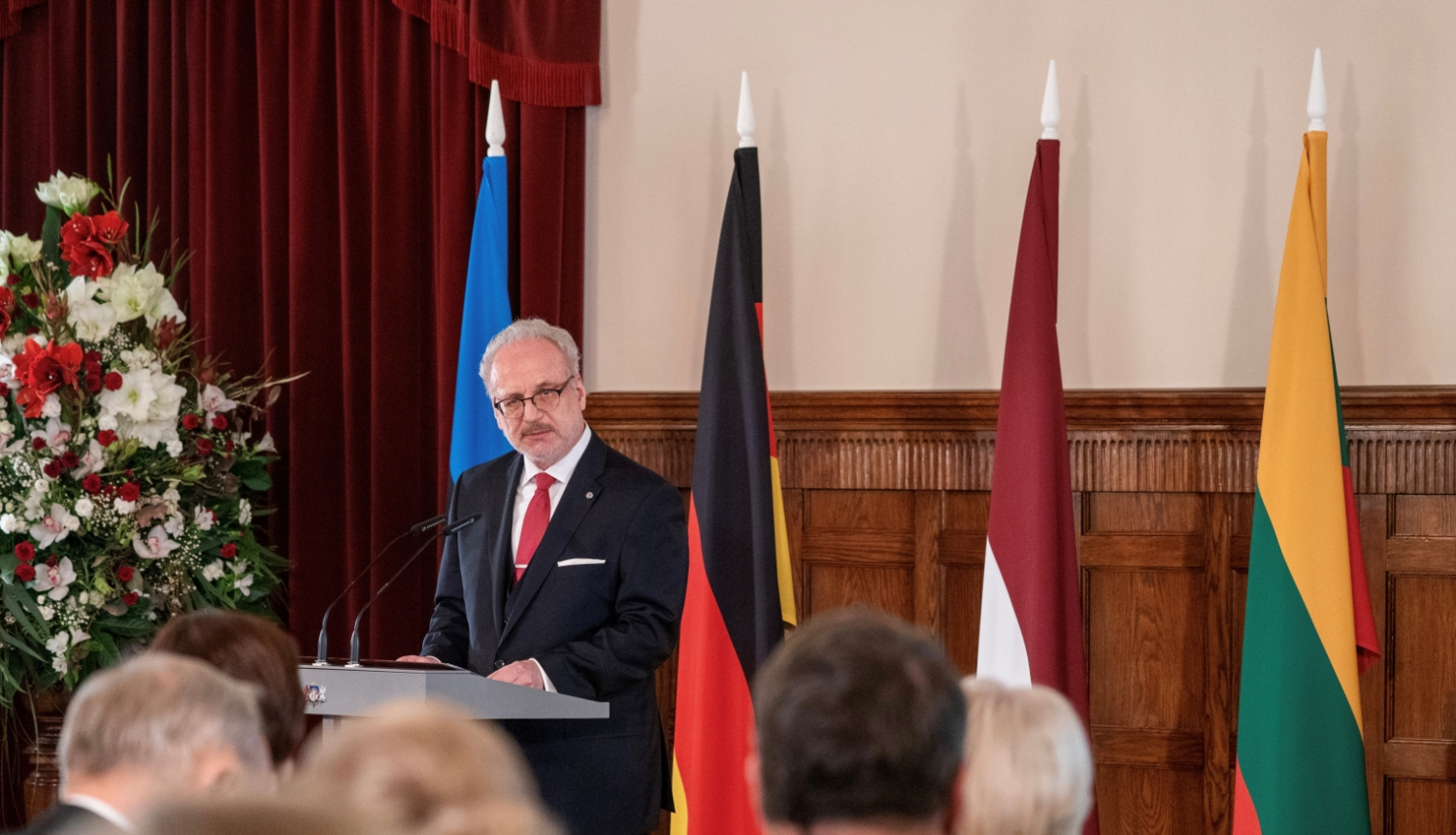Your excellency Federal President Steinmeier,
Honourable Madam Speaker,
Justices of the Constitutional Court,
Academicians,
Ladies and gentlemen,
I
This is the time when we celebrate the jubilee of Satversme.
Satversme, which determined the political system of the new Republic of Latvia, was adopted by Latvia’s first parliament elected in free elections, Constitutional Assembly, on 15 February 1922.
II
Back then, MPs working on the draft of Satversme drew a lot of inspiration from the best European democracies, which clearly shows how deeply Latvia has traditionally been integrated into European culture and Western legal tradition, or continental European law, to be precise.
Many of them looked for constitutional law ideas in the United Kingdom and Third Republic in France. This is where the conceptual roots of Latvia’s commitment to parliamentarism lie.
Direct democracy toolbox established by Satversme was absolutely paramount to a number of Constitutional Assembly members who had learnt a great deal about that while living in exile in Switzerland.
However, the biggest source of inspiration was the German constitution of 11 August 1919, the so-called Weimar Constitution.
Latvian legal scholars and case-law have traditionally relied heavily upon advanced legal concepts developed by German scholars and case-law of the Federal Constitutional Court of Germany, especially since Latvia became independent 30 years ago and the need for legal innovations multiplied.
From the comparative law perspective Latvian constitutional law model belongs to German legal area, like most other Central and Eastern European systems.
I am absolutely delighted and pleased to welcome Federal President of Germany Frank-Walter Steinmeier to our conference. He kindly agreed to give a keynote speech today.
It is President Steinmeier’s first speaking engagement abroad since re-election for another term three days ago.
Meine herzlichen Glückwünsche, lieber Frank-Walter!
The topic of the keynote address by the Federal President Steinmeier at today’s conference marking the centenary of Satversme is how common constitutional traditions in Europe, which closely incorporate German and Latvian constitutional heritage, guarantee our freedom and democracy.
III
I am also happy to see legal scholars and practitioners from our neighbouring countries: Estonia, Lithuania and Poland.
I am very grateful to the Latvian Academy of Science for the idea to hold such conference and want to thank all legalists and historians for accepting the call to come and discuss our constitution, the roots of Satversme and its contemporary application.
IV
Ladies and gentlemen,
Satversme is one of the oldest effective constitutions in Europe and the world.
All constitutions are a product of their time. But they are also a living organism that grows as time goes by.
A good constitution will always aspire be a perfect blend of traditional and contemporary approaches. Satversme is no different in this regard.
But, as time goes on, new issues beyond the existing case-law of Satversme begin to appear. Issues, which are to be resolved by the constitutional legislature.
One group of issues that require regulation are linked to institutional setup, which can be resolved by legislators. The other group of issues are linked to values. Values which have formed in the public perception and require legislators to find a political consensus as to how these values will be reflected.
That is why constitutional legislature, with best interests of society in mind, has expanded the body of Satversme.
Fundamental rights chapter is the most noteworthy addition, which was made in 1998. It contains a list of fundamental rights essential for Latvia as a modern country governed by rule of law. Another important addition was the 2014 Preamble.
Preamble of Satversme establishes the fundamental elements of the Latvian State: the purpose and meaning of the state, its place in Europe, the overarching principles such as democracy, rule of law, socially-responsible and nation state, attributes of national and constitutional identity, the inviolable core of the constitution.
As regards to the unamendable core of Satversme, I believe that Germany, with its Article 79.3 of the Basic Law, was the first to introduce the notion of unamendable constitutional core in 1949. This core has since been the basis of militant democracy, i.e., democratic self-defence mechanism that prevents the use of democratic tools for dismantling of democracy. Preamble of our constitution, Satversme, too, as we can see from constitutional case-law, has established such self-defence mechanisms.
Constitutional Court has a special duty to interpret and protect the values and principles defined in the fundamental rights section and the Preamble of Satversme.
As regards to future, I believe it is time to start thinking about another, small yet important, addition to our basic law. We should consider new provisions regarding the fundamental rights in the digital domain.
It is crucial not only for protection of human rights in the digital space, but also for counterbalancing the global shifts that are pushing democracies closer to the edge where personal autonomy, free will are at a particular risk, which emanates from increasing dominance and pervasion of digital technologies in our everyday life and those who control these technologies. I believe this is the task of legal professionals, constitutional law experts and, of course, constitutional legislature.
I have already discussed it with the Constitutional Court, and such discussion will probably start soon.
V
Ladies and gentlemen,
I wish you all a productive conference and a lot of exciting takeaways.
Let us celebrate the centenary of Satversme while also keeping an eye on the future.
Thank you!




